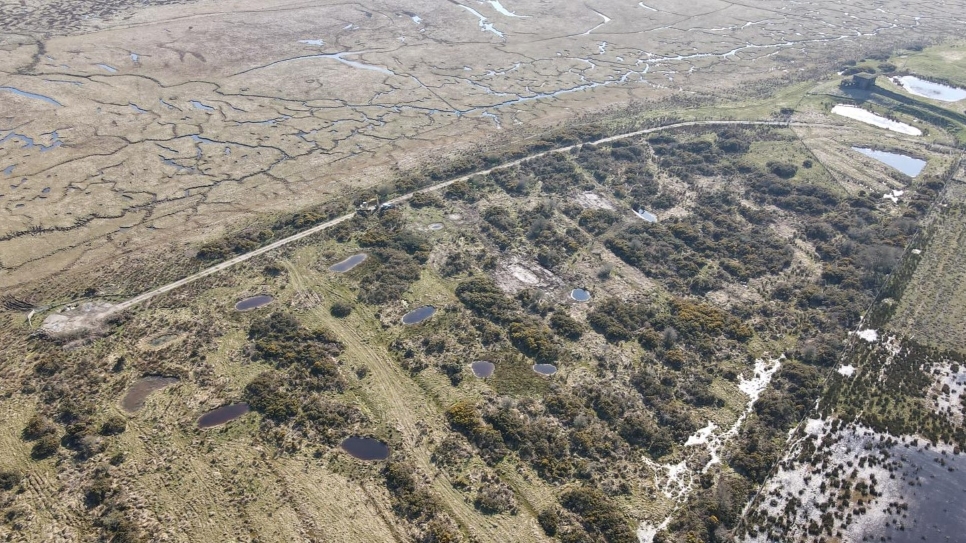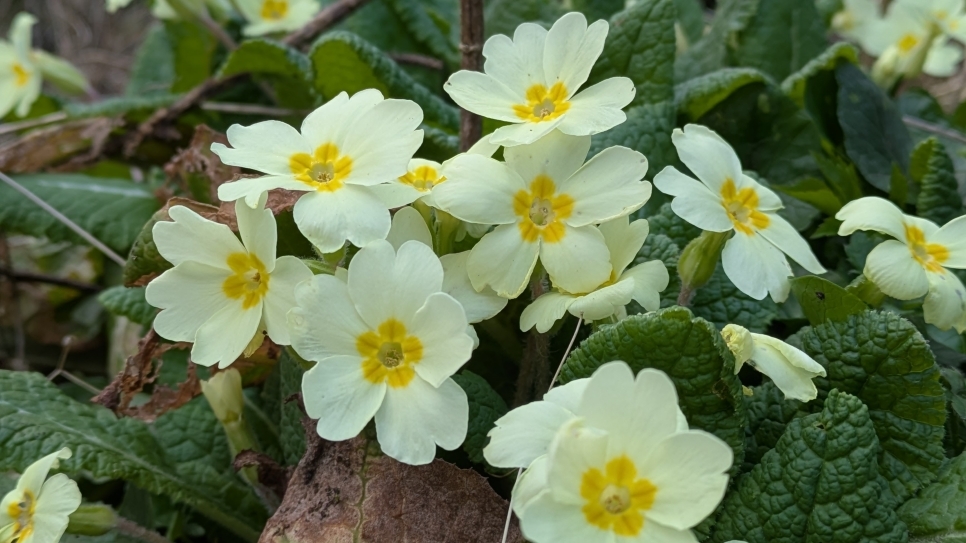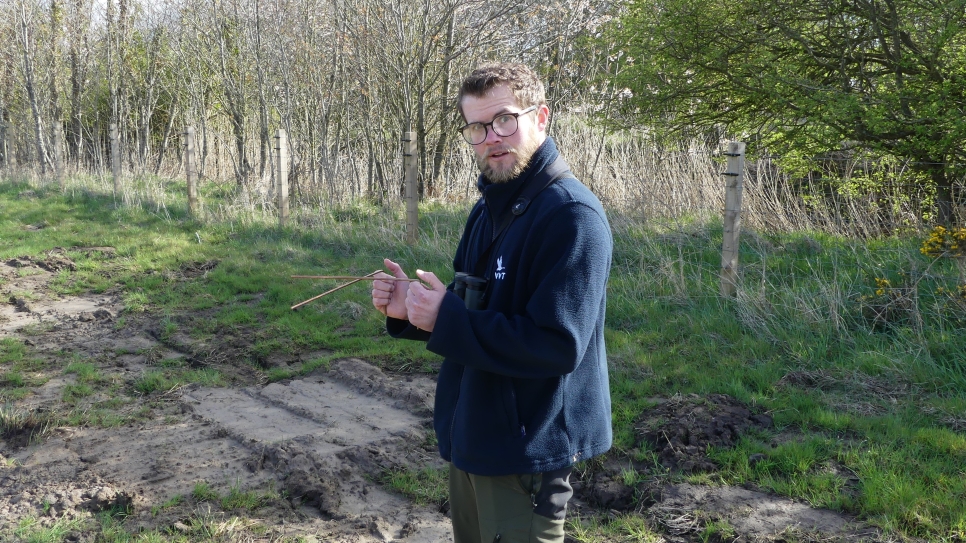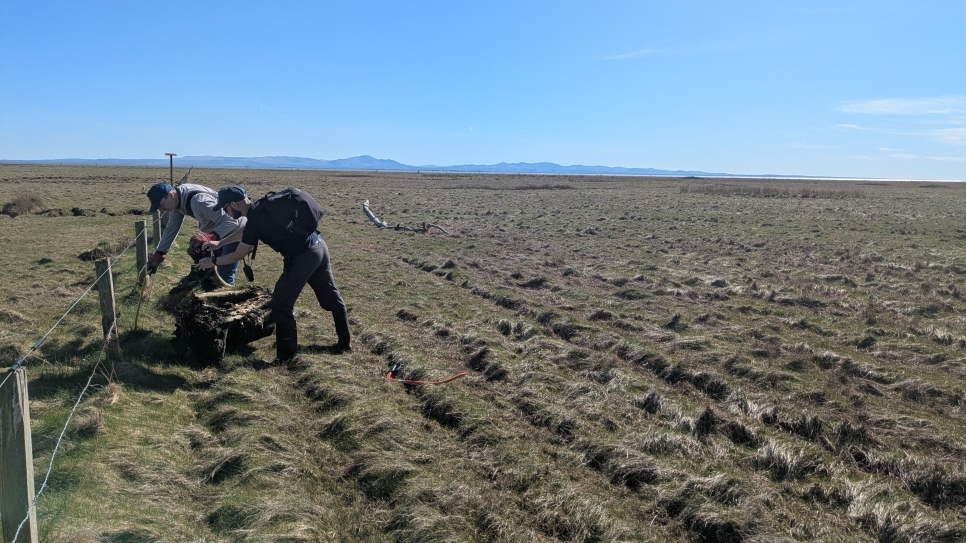Goosander and Flocks of Winter Waders
We’ve had a great start to the New Year here at WWT Caerlaverock! Our Big Bird Challenge started on the 1st of January with the placement students being pitted against the wardens to see who can spot the most species of birds before the end of the month. On New Year’s Day, visitors and volunteers were invited to get involved and as you can see from the sightings list below, many were identified!
Highlights have included some large flocks of golden plover and lapwing. These flocks (sometimes of mixed species) form in the winter time because they communally feed as an anti-predator defence mechanism. This ‘dilution effect’ works because for any one predator attack, the larger the group of prey animals, the smaller the chance that any particular individual will be the victim.
Both species have suffered large population declines in the last century due to a reduction in traditionally managed grass and farmland, in particular the loss of mixed farming and spring cropping. Being able to provide suitable habitat for these birds during winter time is a super important part of the work we do here at WWT Caerlaverock.
Other highlights include goosander: they have been seen multiple times in the last fortnight. Part of the sawbill family, they have serrated beaks so they can catch fish. They have a penchant for salmon and trout making them come into conflict with fishermen. Goosander nest in holes in trees along the riverbank. Just like the golden plover and lapwing, they are gregarious birds and can form huge flocks, although we have only seen a few of them on site so far this winter.
Written by Marianne Nicholson
22nd December
Merse
- Great white egret
PSO
- Stoat
23rd December
Merse
- 80 golden plover
Saltcot Loaning
- Sparrowhawk
Folly Pond
- 2 pintail (male and female)
27th December
Newfield Hide
- Lots of barnacle geese
Sparrowhawk
Folly Pond
- 15 redshank
- 3 black tailed godwits
- 30 dunlin
Paddock
- Female reed bunting
- Fieldfare
Avenue
- Goldcrest
- Treecreeper
Teal Pond
- Heron
- Little egret
Corner field
- 88 lapwing
- 21 golden plover
- 5 redwing
Avenue Tower
- Lots of barnacle geese
Saltcot
Peregrine falcon
- Male hen harrier
- 2 little egrets
- Thousands of dunlins
- Lots of pintail
29th December
Back Pond
- 3 goosander (2 males and 1 female)
Saltcot
- 2 merlin
1st January
Newfield hide
- 60+ redshank
- 21 lapwing
- 3 oystercatchers
- 10 curlew
- 2 blacktailed godwits
Feeding station on PST
- 1 siskin
Corner by PSO
- 6 yellowhammer
Paddock
- 11 fieldfare
Flying overhead
- 200+ lapwing
Teal pond
- 1 little grebe
Avenue Tower
- 2 peregrine falcons
- 1 buzzard
- 1 song thrush
- 100+ golden plover
- 1 little egret
- 3 shelduck
Folly Pond
- 10 snipe
- 5 redshank
Saltcot
- 2 buzzard
- 1 ring tail hen harrier
- 1 goosander
- 28 shelduck
- 3 little grebe
2nd January
Newfield Hide
- Pied wagtail
- Grey wagtail
- Rook
- Jackdaw
- Curlew
PST
- Blue tit
- Great tit
- Chaffinch
- Green finch
- Dunnock
- Blackbird
- Wren
PSO
- Mute swan
- Whooper swan
- Mallard
- Teal
- Wigeon
- Moorhen
- Canada goose
- Tufted duck
Saltcot
- Wren
- Barnacle geese
3rd January
PST
- Red poll
01/01/23 Inland Bird Count
Whooper swan – 115
Teal – 366
Wigeon – 153
Redshank – 5
Common snipe – 1
Moorhen – 17
Mallard – 153
Shoveler – 27
Mute swan – 41
Greylag goose – 1
Canada goose – 134
Tufted duck – 7
Barnacle geese – 866
Shelduck – 3
Peregrine falcon – 2
Buzzard – 1
Golden plover – 109
Photo credit Alex Hillier



